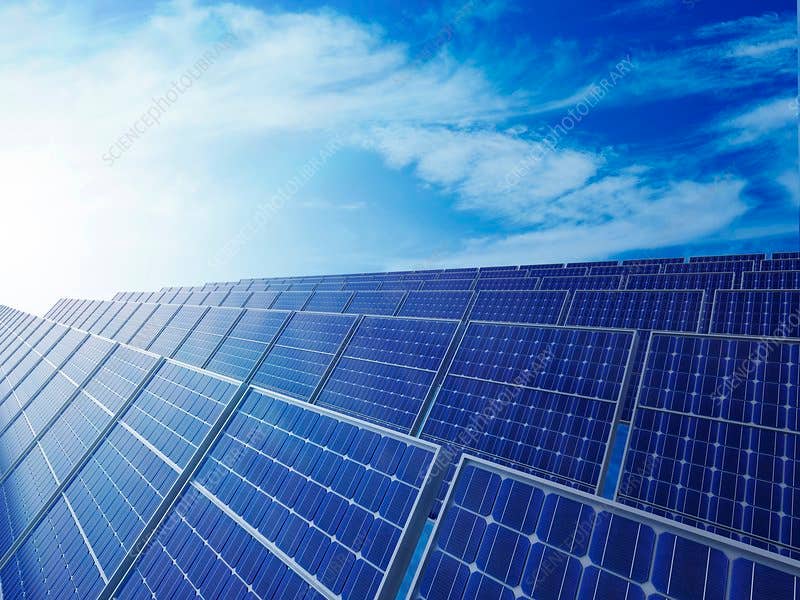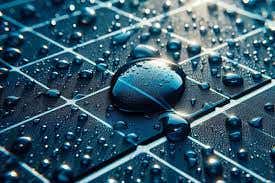High-efficiency smart energy device stores solar power for use after dark
Researchers develop a self-charging solar supercapacitor with 63% energy storage efficiency and improved long-term performance.

New solar supercapacitor stores 63% of solar energy, setting the stage for faster, cleaner, and more reliable renewable power. (CREDIT: Andrzej Wojcicki)
Harvesting the sun’s energy has always been an exciting challenge. As technology races forward, scientists are finding new ways to both collect and store that energy more efficiently.
A recent scientific breakthrough brings a powerful solution one step closer to your home, school, or office. Researchers have created a smart energy storage device that not only captures sunlight but also stores it efficiently for later use.
This innovation pairs silicon-based solar cells with high-performance supercapacitors. It could mean better, faster, and more stable energy supplies—especially where consistent power is hard to come by. Using materials that improve both how much energy can be stored and how quickly it can be delivered, this new design marks a big leap in clean energy technology.
Building Better Supercapacitors
The key to this new energy storage system is the supercapacitor. Unlike batteries, supercapacitors can charge and discharge much faster. They can also last through more charging cycles without wearing out. But they often fall short when it comes to storing large amounts of energy.
To fix this, the team built a better supercapacitor using nickel foam. This lightweight, three-dimensional material gives the device a huge surface area. Onto this foam, scientists deposited nickel compounds that act as the core of the supercapacitor’s electrodes. The large surface helps store more energy and allows it to move quickly in and out of the system.
Still, there was a problem. Using only nickel ions caused a drop in conductivity. That’s like a road getting clogged during rush hour—energy just doesn’t flow well. To improve this, scientists added other metal ions—manganese, cobalt, copper, iron, and zinc. These extra metals formed binary compounds, meaning they paired up with nickel to create strong and stable materials.
The result? These new compounds boosted conductivity, held their shape under stress, and allowed for energy to be stored and reused many times without much loss. They created electrodes that could perform at a much higher level than ever before.
Related Stories
A Device That Stores and Delivers Energy
The best-performing material in the tests was a combination of nickel and cobalt in a compound called nickel carbonate (NiCo(CO₃)(OH)₂). This electrode showed very high energy storage capacity and remained stable even after many uses.
The supercapacitor reached an energy density of 35.5 watt-hours per kilogram. That’s much more than the typical 5 to 20 watt-hours per kilogram seen in older models. The power density hit 2555.6 watts per kilogram, which far outpaces the 1000-watt-per-kilogram mark seen in previous work.
In simple terms, this means the device can both store a lot of energy and release it quickly when needed. High power density allows for instant energy delivery—something that’s crucial when powering large or fast devices.
And the good news doesn’t stop there. This new supercapacitor was able to go through many charging and discharging cycles with almost no loss in performance. That makes it a great choice for long-term use, reducing the need for frequent replacements and helping the environment by cutting down on waste.
Connecting Solar Cells Directly
To make this storage device even more useful, the team connected it directly to a solar panel. The solar cells were made from silicon, a material often used in solar technology for its ability to convert light into electricity efficiently.
This direct connection means the energy from the sun goes straight into the supercapacitor without needing extra circuits or converters. The system had a storage efficiency of 63%. That means nearly two-thirds of the solar energy collected could be stored for use. Overall, the device achieved a total efficiency of 5.17% under normal sunlight conditions.
These numbers might not sound big, but for an early model combining solar cells and supercapacitors, they are very promising. It shows the system can work in real-world conditions and suggests even better results could be possible with more research.
A New Step Toward Clean, Portable Energy
This study was led by scientists at two universities, and their excitement is clear. “This study is a significant achievement,” said Jeongmin Kim, a senior researcher at DGIST in South Korea. “It marks the development of Korea’s first self-charging energy storage device combining supercapacitors with solar cells. By utilizing transition metal-based composite materials, we have overcome the limitations of energy storage devices and presented a sustainable energy solution.”
His teammate, researcher Damin Lee, added, “We will continue to conduct follow-up research to further improve the efficiency of the self-charging device and enhance its potential for commercialization.”
Together, their work points to a future where energy from the sun can be captured and used on the go—without relying on large battery packs or constant access to the power grid. This could be especially helpful in remote areas, emergency settings, or for wearable tech that needs constant, lightweight power.
Looking Ahead
As the world searches for cleaner and more dependable energy systems, this new design offers hope. By combining the fast-charging power of supercapacitors with the renewable source of sunlight, the team has opened the door to safer, quicker, and more reliable energy storage.
The technology still needs more refining before it can be used everywhere. But its early success shows great promise. It’s one more step toward a future where solar energy is not only captured effectively but also stored smartly for whenever it's needed most.
Note: The article above provided above by The Brighter Side of News.
Like these kind of feel good stories? Get The Brighter Side of News' newsletter.
Mac Oliveau
Science & Technology Writer | AI and Robotics Reporter
Mac Oliveau is a Los Angeles–based science and technology journalist for The Brighter Side of News, an online publication focused on uplifting, transformative stories from around the globe. Passionate about spotlighting groundbreaking discoveries and innovations, Mac covers a broad spectrum of topics—from medical breakthroughs and artificial intelligence to green tech and archeology. With a talent for making complex science clear and compelling, they connect readers to the advancements shaping a brighter, more hopeful future.



